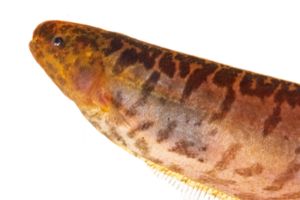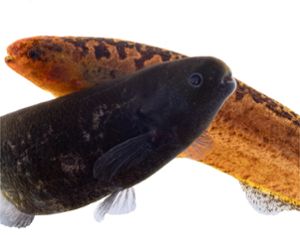How fish evolved electric organs
In a study published June1 in the journal Science Advances, the team explained how small genetic changes enable weakly electric fish to evolve their electric organs. The findings could have broader implications for human health and disease.
As a result of those genetic changes, the fish took tiny protein motors that typically make muscles contract and repurposed them to generate electric signals in a new organ. These proteins and their associated genetic components are found across vertebrate species, among them humans.

“The really striking thing to me is these esoteric fish allow us to understand something profound about how our own genomes function,” said Jason Gallant, an associate professor of integrative biology in the College of Natural Science at MSU.
“This is exciting because we can see how a small change in the gene can completely change where it’s expressed,” said Harold Zakon, professor of neuroscience and integrative biology at the University of Texas at Austin.
Weakly electric fish are fish that use weak electric signals in a manner akin to bird songs, to communicate with other electric fish and share important information, including their sex and species. They’re related to the better-known strongly electric fish, such as electric eels, that can generate enough power to stun prey or zap predators.

Evolution took advantage of a quirk of fish genetics to develop electric organs. All fish have duplicate versions of the same gene that produces tiny muscle motors, called sodium channels. Electric fish turned off one copy of the sodium channel gene in muscle, turned it on in other cells and voila: a new organ was born.
This much of the story had been known. The new research is helping show exactly how it happened.
The team discovered a short section of DNA in the sodium channel gene that controls whether the gene is expressed in any given cell. The researchers found that, in electric fish, this control region is either altered or entirely missing. And the implications go far beyond the evolution of electric fish.
“This control region is in most vertebrates, including humans,” Zakon said. “So the next step in terms of human health would be to examine this region in databases of human genes to see how much variation there is in healthy normal people and whether some deletions or mutations in this region could lead to a lowered expression of sodium channels, which might result in disease.”
“Electric fish are really important biomedical models,” Gallant said. “That’s why some of the oldest textbooks in the field have engravings of electric eels on them.”
In humans and other vertebrates, there’s very little wiggle room when it comes to sodium channels and similar proteins called ion channels. In fact, there are conditions including epilepsy that can have their roots in mutations or other deviations to the channels.

Fish have much more flexibility thanks to their duplicate genes, allowing electric fish to do some extraordinary things with their ion channels, such as evolving an electric organ. Understanding how and why those adaptations work allows researchers to discover and explore general biological principles.
“Electric fish are masters of messing with what’s usually a very highly constrained biophysical system,” Gallant said. “They’ve become this evolutionary laboratory that allows us to better characterize and understand ion channels.”
That’s why the National Science Foundation awarded Gallant a $1.5 million grant in 2017 to better understand electric fish genetics and firmly establish the fish as model organisms. With the grant work and this new Science Advances publication — which was also supported by the NSF — the team is empowering others in the research community to ask questions and find answers with electric fish.
“This is the coming of age of the electric fish system and a preview of coming attractions,” Gallant said.
“You can choose to study genetics and molecular biology in any number of systems, but the mysteries presented by electric fish are the things that get me out of bed in the morning,” he said. “They’re like living Pokémon. Each one is so different to the next, and inside everyone is a discovery waiting to be made. We’re hoping that MSU is remembered as the birthplace of the electric fish system.”
While Gallant and his UT Austin collaborators are helping other researchers explore nature’s mysteries with electric fish, they have their own questions they will continue to probe.

For example, there are two groups of electric fish in the world: one from Africa and the other from South America. The researchers discovered that the electric fish from Africa had mutations in the sodium channel control region, while electric fish from South America lost it entirely. So how did these two different groups of electric fish arrive at the same solution for developing an electric organ — losing expression of a sodium channel gene in muscle — via two different paths? As Gallant puts it, “that’s the gold in the hills.”
“If you rewound the tape of life and hit play, would it play back the same way or would it find new ways forward? Would evolution work the same way over and over again?” Gallant said. “Electric fish let us try to answer that question because they have repeatedly evolved these incredible traits. We swung for the fences in this paper trying to understand how these sodium channel genes have been repeatedly lost in electric fish. It really was a collaborative effort.”
The study’s first author was Sarah LaPotin, a research technician in Zakon’s lab at the time of the research and currently a doctoral candidate at the University of Utah. In addition to Gallant and Zakon, the study’s other senior author was Johann Eberhart, a professor of molecular biosciences at UT Austin.
Banner image: Michigan State researchers helped discover a small genetic tweak in electric fish that has implications for most vertebrates, including humans. Electric fish native to Africa (such as this gray elephantfish) and South America (like the rust-colored knifefish) evolved along different paths to reach the same destination — having an electric organ. Credit: Jason Gallant